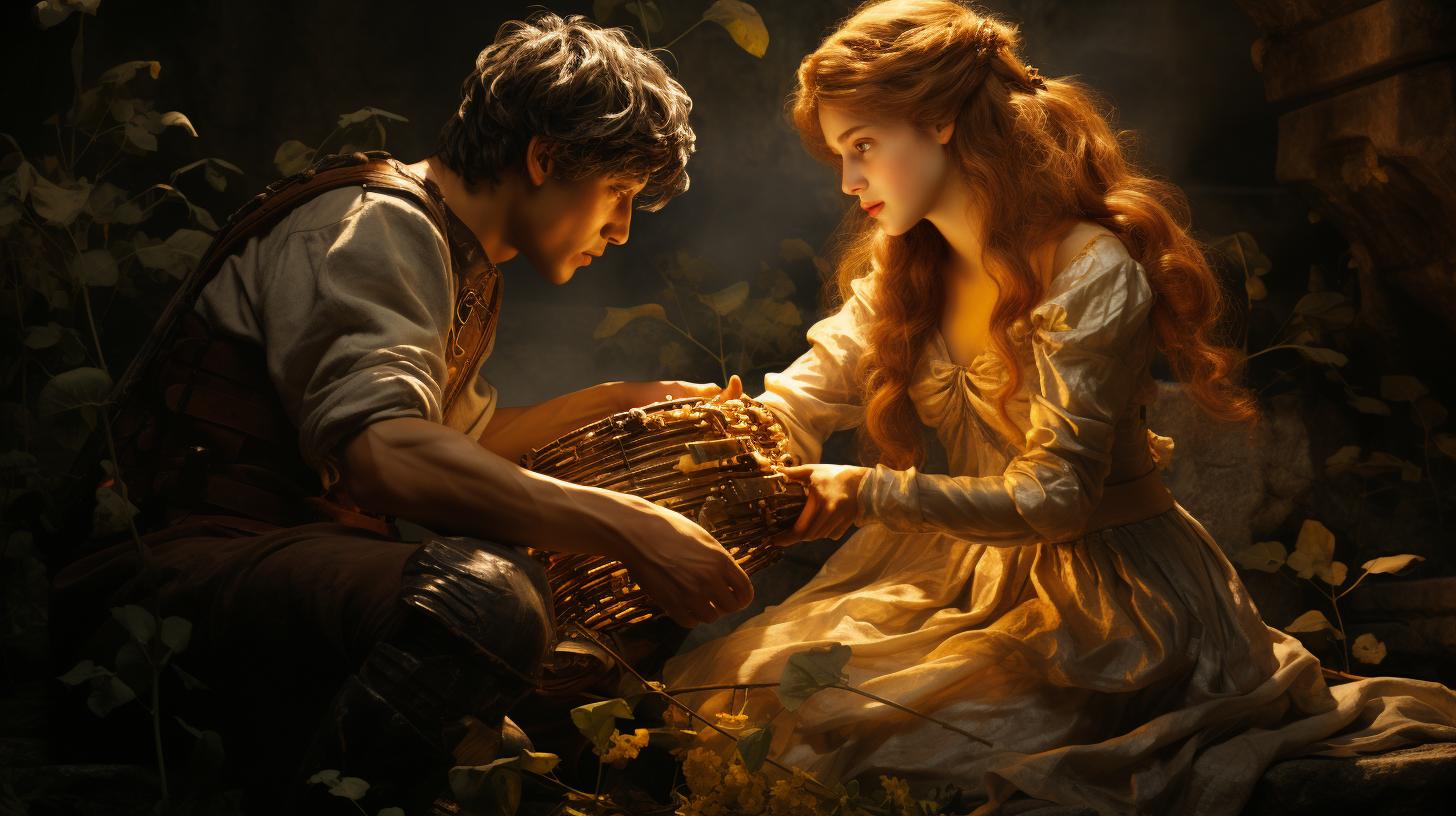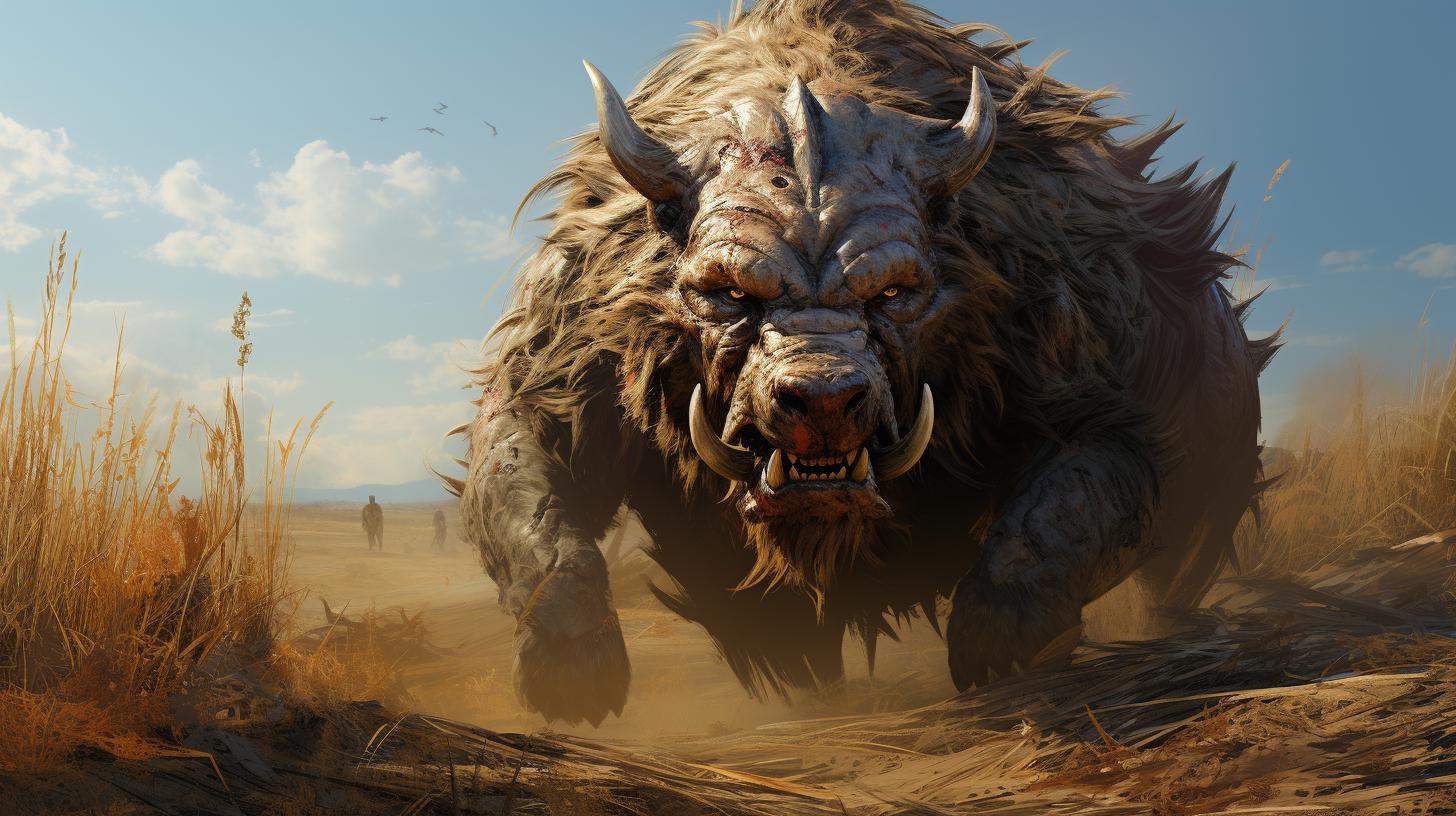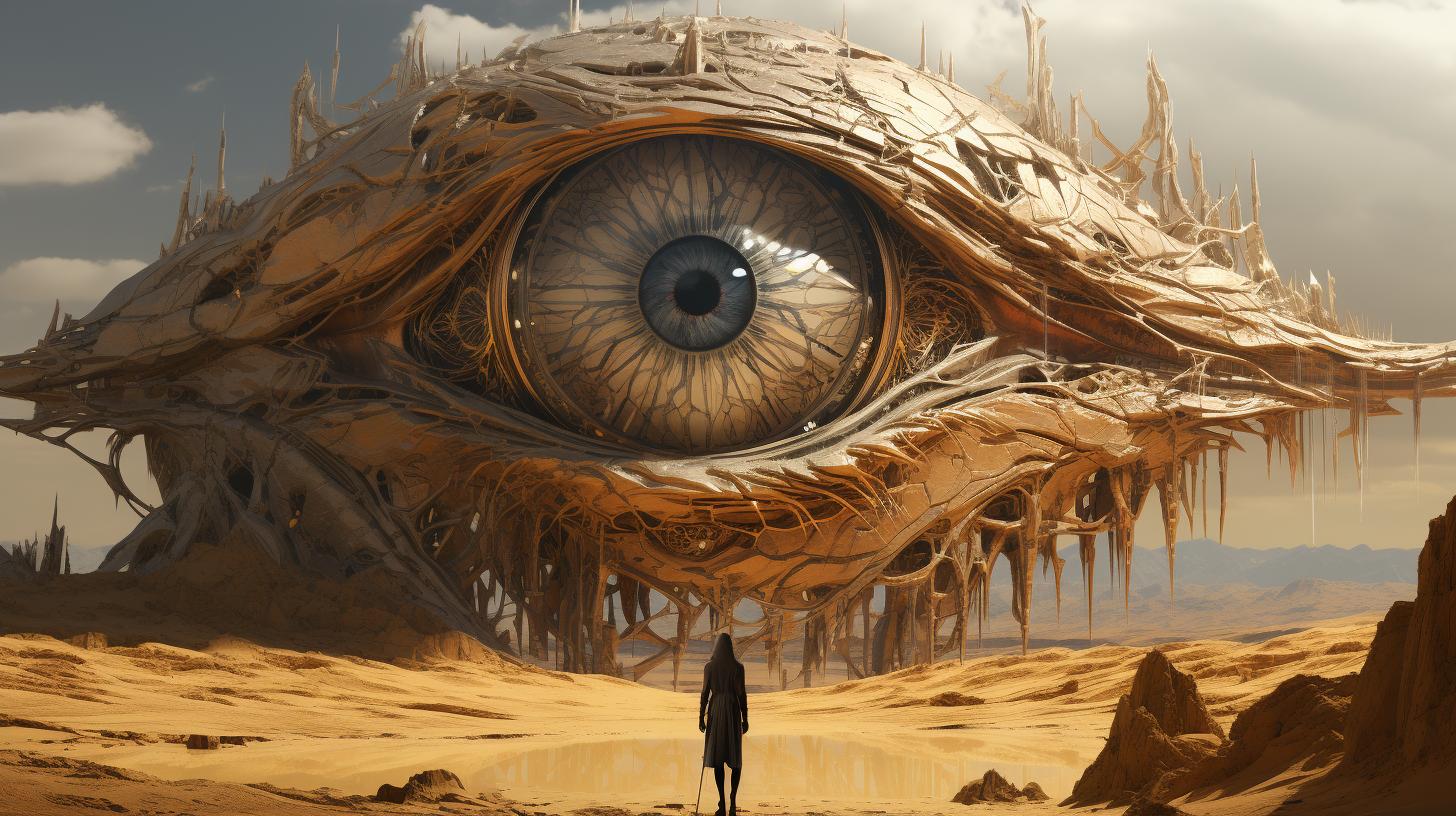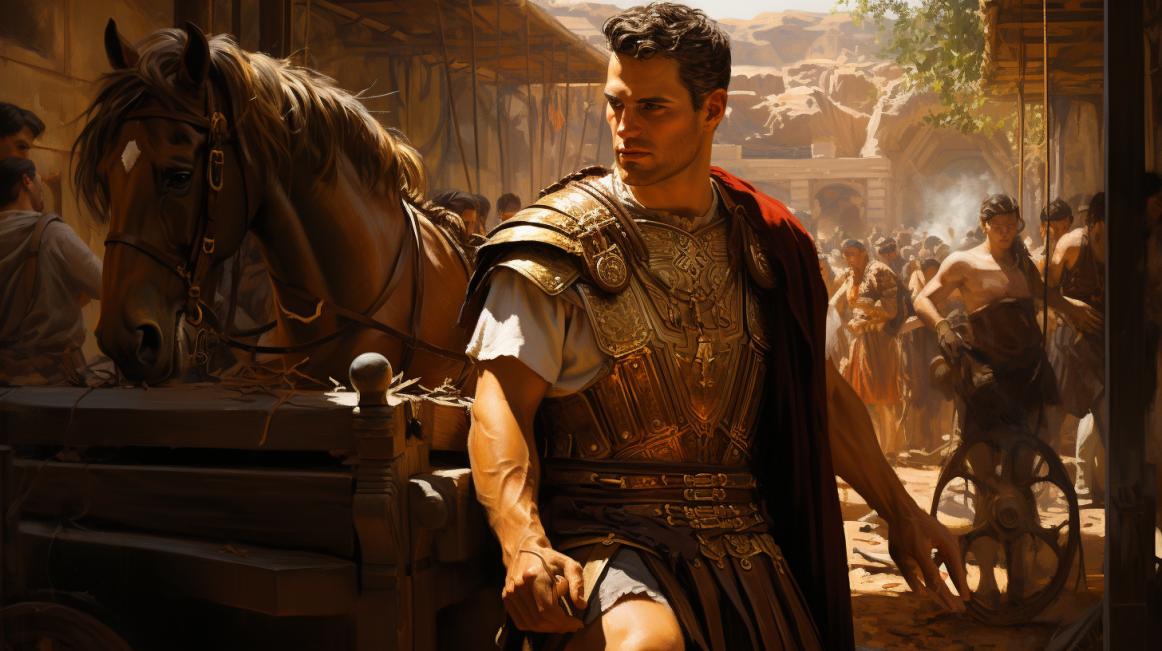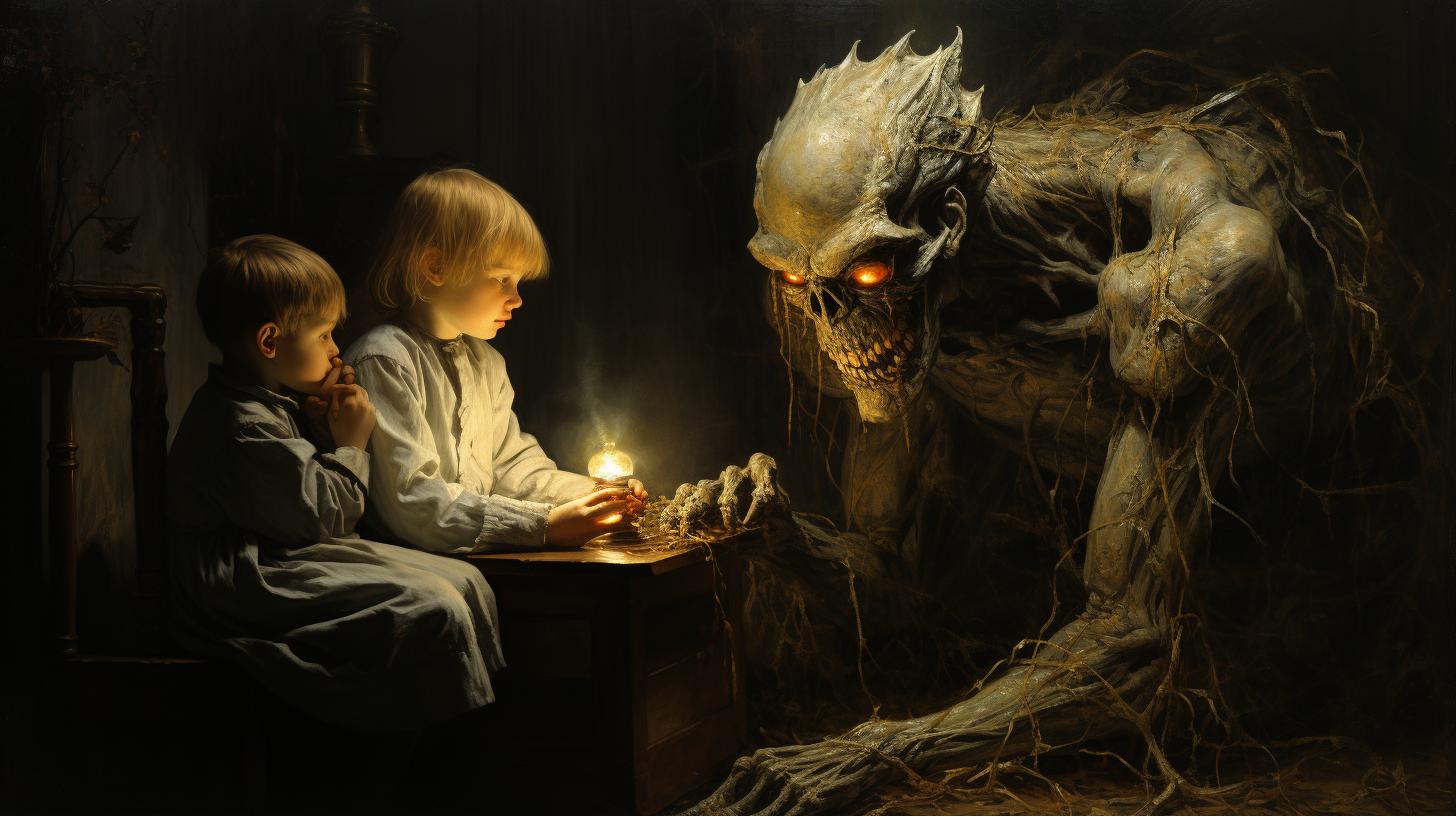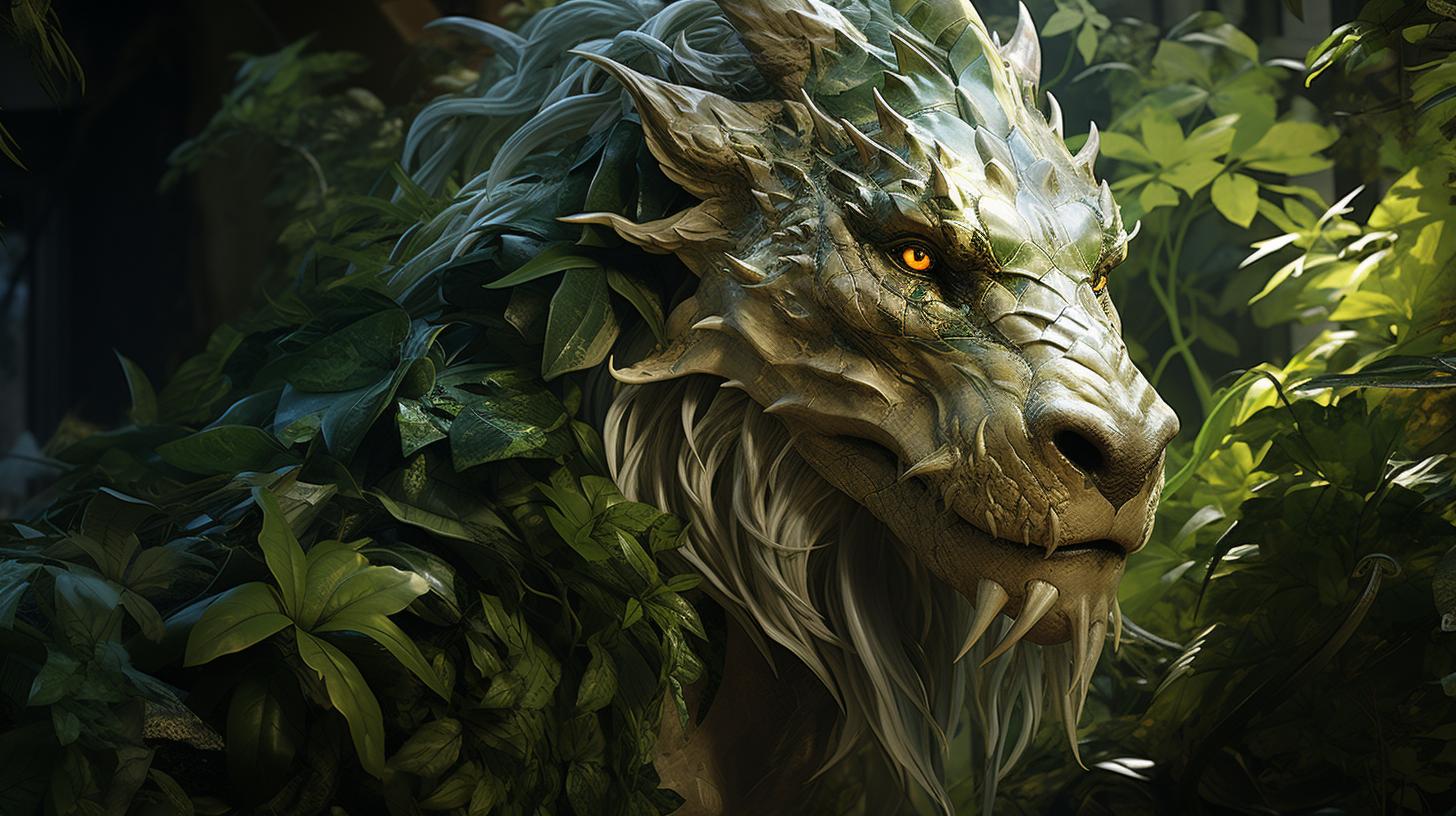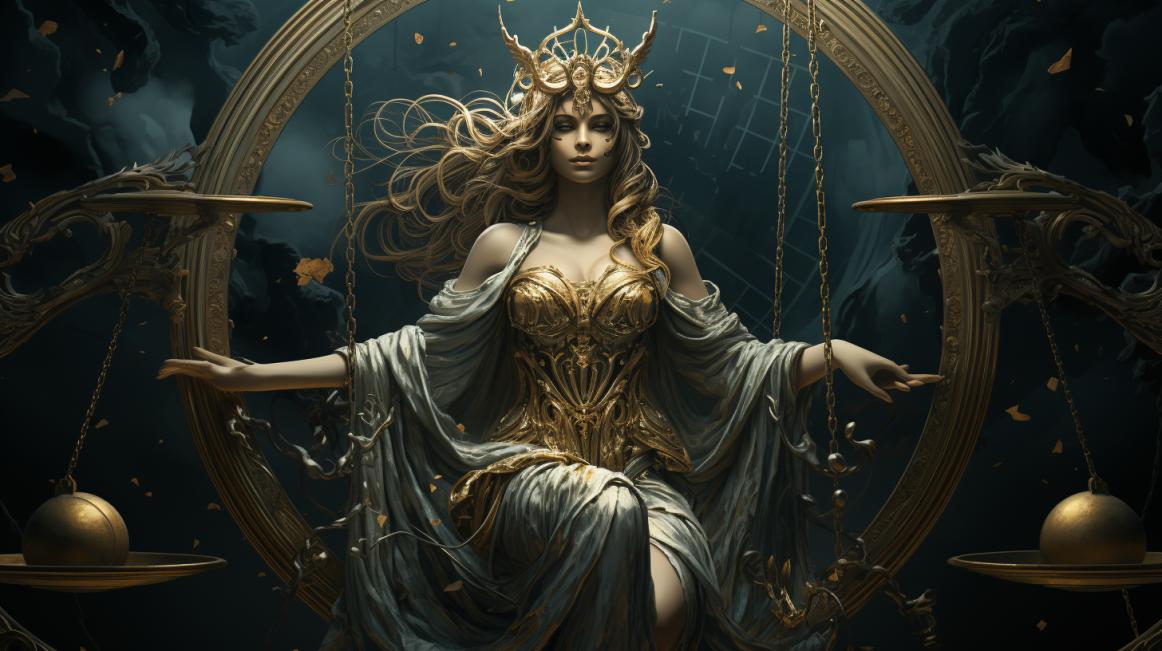Aristaeus: Unveiling the Mysteries of Greek Mythology
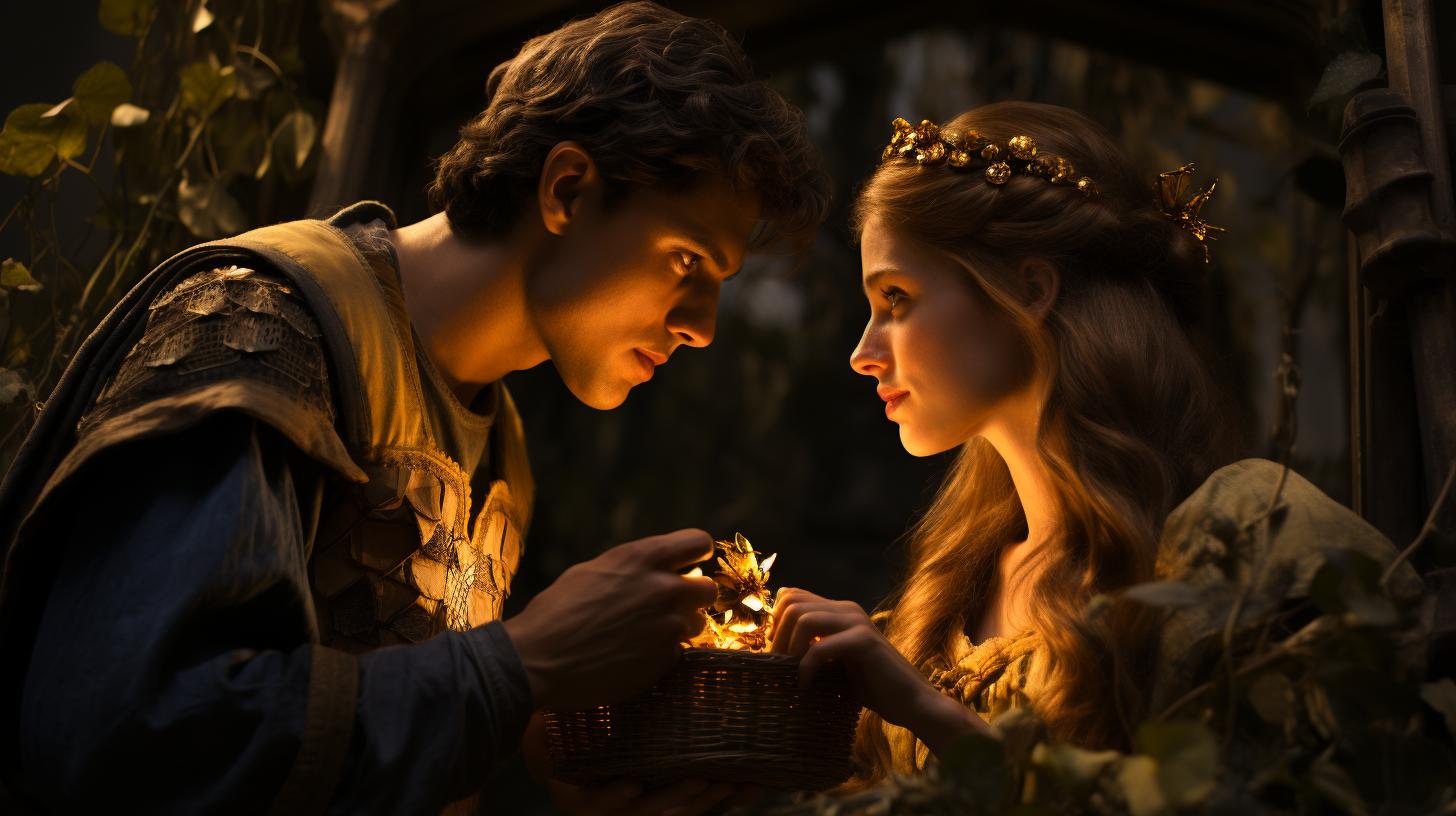
Aristaeus, a prominent figure in Greek mythology, is known for his role in the discovery of various rural arts and useful crafts, including beekeeping. Son of the huntress Cyrene and Apollo, Aristaeus was revered in multiple regions such as Beocia, Arcadia, Ceos, Sicily, Sardinia, Thessaly, and Macedonia.
His journeys were significant in explaining his widespread manifestations. He possessed a diverse range of skills and knowledge acquired from his family connections, including prophecy, healing, hunting, farming, dairy production, and winemaking.
Aristaeus’ travels, offspring, and interactions with other gods shaped his status as an influential figure in Greek mythology.
The Legend of Aristaeus: Greek God of Bees
In Greek mythology, Aristaeus is revered as the god of bees and a figure associated with rural arts. According to the legends, he was the son of the huntress Cyrene and the god Apollo. Born with a divine heritage, Aristaeus played a crucial role in discovering various useful rural crafts, including the art of beekeeping.
His story is steeped in mythological significance and showcases his importance in the Greek pantheon.
Aristaeus’ divine lineage traces back to Apollo, the god of music, poetry, and prophecy, and his mother Cyrene, known for her hunting skills and rejection of traditional feminine pursuits.
In some accounts, Aristaeus was raised in the protection of the centaur Chiron and the nymphs known as the Thriae, who played a significant role in his education and imparted him with their respective expertise.
As the patron of beekeeping, Aristaeus introduced the art of managing and nurturing bees, extracting honey, and understanding their intricate behavior. His association with bees not only symbolized the importance of agriculture but also highlighted the connection between humans and nature.
Aristaeus’ prominence extended beyond the realm of apiculture. His parentage gifted him with diverse skills and knowledge. From his father Apollo and the centaur Chiron, he acquired the ability to prophesy, heal, and gain herbal wisdom.
His mother Cyrene and aunt Artemis taught him the art of hunting, tracking animals, and utilizing traps. The nymphs who raised him shared their expertise in dairy production, beekeeping, and olive cultivation.
Additionally, gods like Athena, Poseidon, Hephaestus, and many others contributed to his extensive range of abilities.
Throughout his journeys, Aristaeus visited various regions such as Beocia, Cerdeña, Arcadia, Ceos, Sicilia, Tesalia, and Macedonia, leaving a lasting impact on the communities he encountered. Beocia honored him as ‘Apolo pastoril,’ and his marriage to Autonoë, daughter of Cadmus, played a crucial role in the founding myth of Thebes. Cerdeña claims him as the father of Charmus and Callicarpus, further cementing his influence in different parts of Greece.
The legend of Aristaeus transcends mere mythology and showcases his significance as a deity associated with agriculture, beekeeping, and rural arts. His story not only provides insight into the Greek pantheon but also reflects the cultural values and beliefs of ancient Greece.
Today, his legacy lives on, reminding us of the intricate relationship between humanity and the natural world.
The Parentage of Aristaeus: Son of Apollo and Cyrene
Aristaeus, a prominent figure in Greek mythology, was born as the son of Apollo, the god of the sun, and Cyrene, a skilled huntress. This divine parentage bestowed upon him a unique heritage, blending the powers of the sun god with the prowess of a huntress.
The union of Apollo and Cyrene produced a child who would become known for his various talents and contributions in the realms of agriculture and rural arts.
Apollo, a major deity in Greek mythology, was revered for his association with light, music, and prophecy.
Cyrene, on the other hand, was a powerful huntress who favored the bow and arrow over traditional feminine pursuits. Their union represented the merging of two diverse yet complimentary spheres of influence, resulting in the birth of Aristaeus.
As the son of Apollo and Cyrene, Aristaeus inherited a rich and varied skill set from both of his parents. From Apollo, he acquired the ability to prophesize, harness the healing powers of nature, and master the art of herbology.
These gifts would later prove instrumental in his journey and interactions with different regions and gods.
From his mother, Cyrene, and his aunt Artemis, the goddess of the hunt, Aristaeus learned the art of hunting, animal tracking, the intricacies of bone removal, and the effective use of nets and traps.
These skills allowed him to navigate the wilderness with ease and provided him with a deep understanding of the animal kingdom.
Furthermore, Aristaeus was raised and nurtured by the nymphs of Thriae, also known as the myrtle nymphs.
Under their guardianship, he acquired knowledge in dairy production, the meticulous craft of beekeeping, and the cultivation of olive trees. These invaluable skills would enable him to contribute greatly to the rural arts and rural communities.
Aristaeus’ diverse parentage and upbringing imbued him with a deep connection to the gods and goddesses of Greek mythology. Through his lineage, he became a revered figure, embodying the fusion of Apollo’s divine light and Cyrene’s earthbound wisdom.
It was this unique combination that set Aristaeus on a path of discovery, innovation, and divine influence in various realms of Greek mythology.
Aristaeus’ Role in Greek Mythology: Patron of the Arts and Agriculture
Aristaeus holds a significant place in Greek mythology as a revered figure associated with the arts and agriculture.
As the son of Apollo and Cyrene, he inherited a rich lineage of divine gifts and talents.
With his diverse skill set, Aristaeus became a patron of various arts and agricultural practices, providing guidance and knowledge to the ancient Greeks.
He played a pivotal role in the development and advancement of these essential aspects of society.
As a patron of the arts, Aristaeus was closely linked to Apollo and the Muses.
He excelled in prophecy, healing, and herbology, honing his abilities under their tutelage. Through his guidance, individuals gained insight into the future, sought remedies for ailments, and cultivated medicinal plants for the benefit of the community.
In the realm of agriculture, Aristaeus drew influence from his mother, Cyrene, and his aunt, Demeter. He championed farming techniques, such as crop cultivation and animal husbandry. His expertise fostered greater productivity and sustainable practices, ensuring the prosperity of Greek agricultural endeavors.
Aristaeus’ contributions were not limited to the arts and agriculture alone. His connections with various gods and goddesses granted him an extensive repertoire of skills and teachings. He delved into hunting, animal tracking, and the use of traps under the guidance of his mother and aunt, Artemis. From Dionysus, he acquired knowledge of winemaking, while Athene, Poseidon, and Hephaestus imparted him with other valuable abilities.
As a patron and teacher, Aristaeus embarked on journeys, sharing his wisdom with different regions and communities. His travels spanned Beocia, where he played a vital role in the founding of Thebes through his marriage to Autonoë, daughter of Cadmus.
In Cerdeña, he left his legacy as the father of Charmus and Callicarpus, further enriching the island’s culture and progress.
Aristaeus’ influence extended to Arcadia, where he is immortalized in the sanctuary of Ortheia as a winged male figure.
His expertise in agricultural practices and rural arts solidified his revered status in this region.
In Ceos, Aristaeus performed a ritual to ward off the negative effects of the star Sirius, which brought diseases to the island.
Through his intervention, the isle regained harmony and experienced a cooling breeze that lasted for forty days.
Throughout Sicily, Thessaly, Macedonia, and beyond, Aristaeus’ divine manifestations left a lasting impact on local traditions and beliefs.
These regions venerated him for his contributions to their agricultural and artistic endeavors.
Overall, Aristaeus’ role as a patron of the arts and agriculture played a crucial part in Greek mythology.
His extensive knowledge, teachings, and journeys left an indelible mark on the ancient Greek world, enriching their practices and fostering societal progress.
The Mythological Connections of Aristaeus: Interaction with Other Gods and Goddesses
Aristaeus, the Greek god of bees, had significant interactions with various gods and goddesses in Greek mythology.
These connections bestowed upon him a diverse range of skills and knowledge.
- Apollo: As the son of Apollo, Aristaeus gained insights into prophecy, healing, herbology, and other arts associated with his divine father.
- Cyrene: His mother, Cyrene, and his aunt Artemis imparted their hunting expertise to Aristaeus, teaching him animal tracking, boning, and the use of nets and traps.
- The Muses: Aristaeus also received teachings from the Muses, enabling him to master various arts and inspire creativity.
- The Thriae: Nymphs known as the Thriae nurtured Aristaeus and taught him the art of dairy production, beekeeping, and olive cultivation.
- Quirón: Quirón, the wise centaur, initiated Aristaeus into the mysteries during his voyage from Libya to Beocia.
He further enhanced his knowledge and skills.
- Other Deities: Aristaeus acquired additional abilities from a multitude of gods and goddesses, such as hunting from his mother, father, and uncle Hermes, agricultural skills from his great-aunt Demeter, and winemaking from his uncle Dionysus, among others.
These mythological connections made Aristaeus a well-rounded and versatile deity, enabling him to excel in various domains and play a significant role in the Greek pantheon.
Aristaeus’ Travels and Gifts to Different Regions
Aristaeus, the Greek god associated with agriculture and rural arts, embarked on various journeys throughout Greece, leaving behind a lasting impact on different regions. Let’s explore some of the notable locations where Aristaeus played a significant role:
Beocia: Aristaeus as ‘Apolo Pastoril’ and his Marriage to Autonoë
In Beocia, Aristaeus was revered as ‘Apolo Pastoril’ or Apollo the Shepard.
His marriage to Autonoë, the daughter of Cadmus, played a crucial role in the foundation of Thebes. In Beotian pottery, Aristaeus is often depicted as a youthful winged figure, resembling the Boreas, the spirit of the north wind.
Cerdeña: Aristaeus as Father of Charmus and Callicarpus
In Cerdeña, Aristaeus was recognized as the father of Charmus and Callicarpus. The island’s mythology credits him with fathering these two significant figures, highlighting his fertility and generative powers.
Arcadia: Aristaeus’ Visit and Representation in the Sanctuary of Ortheia
Arcadia had the privilege of hosting Aristaeus during one of his journeys.
He is associated with an ivory tablet found in the sanctuary of Ortheia, where he is depicted as a winged male figure. This representation symbolizes his divine and agricultural influence in the region.
Ceos: Aristaeus’ Ritual to Counter the Effects of the Star Sirius
In Ceos, Aristaeus was credited with a ritual involving climate magic. The ritual aimed to counteract the negative effects of the star Sirius, which caused diseases on the island. By identifying and eliminating hidden murderers, the islanders successfully appeased the star’s wrath, resulting in a cooling breeze known as the etesian winds blowing over the Aegean for forty days.
Sicilia, Tesalia, and Macedonia: Manifestations and Worship of Aristaeus
Aristaeus’ presence extended beyond specific locations, as he was worshipped and manifested in different regions such as Sicily, Thessaly, and Macedonia. The people in these areas revered him for his agricultural and rural expertise, considering him a beneficial deity.
Aristaeus’ travels and interactions with diverse regions highlight the widespread influence of his agricultural knowledge and expertise. His presence brought blessings and practical wisdom to various communities, making him an essential figure in Greek mythology.
Aristaeus’ Skills and Teachings Acquired from Various Gods and Goddesses
Aristaeus, being a demigod with divine parentage, had the privilege of learning from numerous gods and goddesses, acquiring a wide range of skills and teachings. His father, Apollo, blessed him with the gift of prophecy, enabling Aristaeus to foretell events and guide others in their pursuits.
From the centaur Chiron and the Muses, Aristaeus gained knowledge in healing, herbalism, and various forms of art. These abilities allowed him to bring prosperity and well-being to the communities he encountered during his travels.
Aristaeus’ mother, Cyrene, and his aunt Artemis, the goddess of hunting, taught him invaluable skills in tracking animals, bone-setting, and the effective use of nets and traps. With the guidance of the myrtle nymphs known as Thriae, Aristaeus mastered dairy production, beekeeping, and the cultivation of olive trees.
The nymphs nurtured him, sharing their wisdom and expertise in the agricultural and pastoral arts. Under the tutelage of his father, mother, and uncle Hermes, Aristaeus excelled in animal husbandry, a skill essential for flourishing civilizations.
His familial connections extended beyond Apollo, Cyrene, and Artemis. Aristaeus also acquired knowledge from his great-aunt Demeter, the goddess of agriculture, who imparted him with valuable agricultural techniques.
Additionally, his uncle Dionysus taught him the secrets of wine production, ensuring the enjoyment and celebration of life for generations to come. The guidance of Athena, Poseidon, Hephaestus, and other deities further enriched Aristaeus’ repertoire of skills and knowledge.
Equipped with this vast array of teachings, Aristaeus became a multifaceted figure who could navigate diverse domains of human life. His expertise contributed to the prosperity of communities, fostering innovation and progress in rural arts and trades.
Aristaeus’ abilities and wisdom became legendary, leaving an indelible mark on the cultural fabric of ancient Greece.
Aristaeus’ Journey from Libya to Beocia and Initiation in the Cave of Quirón
Aristaeus, born to Cyrene and Apollo, embarked on a significant journey from Libya to Beocia in search of knowledge and purpose. Guided by his divine heritage, he sought initiation in the sacred cave of Quirón, the wise centaur.
In this sacred cave, Aristaeus underwent the rites and rituals that would initiate him into the mysteries of the ancient gods. Quirón, renowned for his wisdom and knowledge, imparted to Aristaeus the sacred teachings and secrets of the natural world, connecting him with the profound powers that governed the universe.
Through the initiation, Aristaeus gained a deeper understanding of the interplay between gods and mortals, learning to navigate the delicate balance between the divine and earthly realms. The wisdom he acquired would shape his destiny and influence his future contributions to Greek mythology.
While the specific details of Aristaeus’ initiation remain shrouded in mystery, it is believed that he undertook a series of challenges designed to test his courage, intellect, and spiritual connection. These trials bestowed upon him the wisdom and strength needed to fulfill his sacred role as a bringer of knowledge and provider of prosperity in agricultural and rural arts.
Emerging from the cave as a transformed being, Aristaeus came to be revered as a divine figure, his journey symbolizing the transformative power of knowledge and the pursuit of higher spiritual understanding.
Armed with the wisdom gleaned from his initiation, he would go on to become a patron of the arts and agriculture and leave an indelible mark on Greek mythology.
Aristaeus’ Offspring and Other Mythological Accounts Associated with Him
Aristaeus, the Greek god of bees, had a significant impact on Greek mythology through his offspring and various mythological accounts connected to him.
Let’s explore some of these fascinating stories:
- Acteón: One of Aristaeus’ most well-known children is Acteón, who met a tragic end. According to the myth, Acteón accidentally stumbled upon the goddess Artemis bathing.
Angered by the intrusion, Artemis transformed Acteón into a stag, and he was ultimately torn apart by his own hounds, unaware of his transformed state.
- Macris: Another offspring of Aristaeus was Macris, a nymph known for her connection to the sea.
Macris possessed a unique ability to transform into various sea creatures, demonstrating her close relationship with the ocean and its inhabitants.
- Hecate: While there are different accounts of Hecate’s parentage, some versions suggest that Aristaeus was her father.
Hecate is a powerful goddess associated with witchcraft, magic, and the night. She plays a significant role in Greek mythology and is often depicted as a three-headed figure.
- Mythological Accounts: Aside from his offspring, Aristaeus is also associated with various mythical tales.
One such account involves the story of Orpheus and Eurydice. When Eurydice, Orpheus’ beloved wife, died, Aristaeus pursued her, leading to her second death. This chain of events serves as a crucial moment in the tragic narrative of Orpheus.
These mythological accounts highlight the far-reaching impact of Aristaeus in Greek mythology.
Through his offspring and involvement in significant stories, he remains an essential figure whose legacy continues to be remembered.
The Role of Aristaeus in the Orpheus and Eurydice Myth: Summary and Interpretation
In the myth of Orpheus and Eurydice, Aristaeus plays a significant role that helps shape the tragic outcome of the story.
When Orpheus, the legendary musician and poet, descended to the Underworld to retrieve his beloved wife Eurydice, Aristaeus became intertwined with their fate.
As Orpheus played his enchanting melodies, the souls of the Underworld were moved, and even the gods shed tears.
Hades, the ruler of the Underworld, allowed Orpheus to retrieve Eurydice on one condition: he must not look back until they reached the surface. Tragically, Orpheus couldn’t bear the silence of his beloved and glanced back, causing Eurydice to be taken back into the realm of the dead forever.
It is in this moment that Aristaeus appeared in the myth. Some versions of the story claim that Aristaeus, witnessing Orpheus’ anguish, came forward as a messenger of the gods, delivering the news of Eurydice’s fate to Orpheus.
This added to Orpheus’ grief and further intensified the tragedy.
The role of Aristaeus in this myth is often interpreted as a representation of the cruel and unpredictable nature of fate.
As a deity associated with agriculture and the mysteries of the earth, Aristaeus symbolizes the forces beyond human control that can disrupt and shape the course of events.
Additionally, Aristaeus’ presence in the myth serves as a reminder of the interconnectedness of different realms and aspects of ancient Greek mythology.
His appearance bridges the realms of the living and the dead, emphasizing the intricate web of relationships and influences between gods, mortals, and the supernatural.
In summary, Aristaeus’ role in the myth of Orpheus and Eurydice adds depth and complexity to the tragic narrative.
His appearance as a messenger of the gods and a representative of the forces of fate highlights the intertwining of different realms and the influence of the divine in shaping human destiny.
The Legacy of Aristaeus in Greek Mythology and Culture
Aristaeus, the Greek god associated with bees and numerous rural arts, left a lasting legacy in Greek mythology and culture. His tales and influence continue to resonate in various aspects of Greek society.
Let’s explore the enduring legacy of Aristaeus:
- Apiculture and Agriculture: Aristaeus’ pivotal role in the discovery and development of apiculture, or beekeeping, remains an integral part of Greek cultural heritage.
His teachings and techniques revolutionized the practice, elevating honey production and its significance.
- Arts and Crafts: As the patron of arts and agriculture, Aristaeus greatly contributed to the advancement of various rural crafts.
His teachings and inspiration enabled artisans to excel in fields such as pottery, weaving, and woodworking, enriching Greek artistic traditions.
- Environmental Stewardship: The exploration of nature and sustainable agricultural practices were central themes in the mythos of Aristaeus.
His reverence for the land and dedication to maintaining ecological balance continue to inspire modern environmental movements and conservation efforts.
- Symbolism and Representation: Depicted in ancient art and literature, Aristaeus has become a symbol of agricultural and pastoral abundance.
His presence on coins and ancient artifacts further highlights his enduring significance in representing the vitality of Greek rural life.
- Mythological Influence: Aristaeus’ stories and interactions with other deities have woven themselves into the tapestry of Greek mythology.
His adventures, partnerships, and progeny continue to captivate audiences and serve as a source of inspiration for contemporary authors, poets, and artists.
The legacy of Aristaeus in Greek mythology and culture stands as a testament to the importance of agriculture, environmental stewardship, and the continuous pursuit of knowledge.
From the art of beekeeping to his diverse skills and teachings, Aristaeus remains an influential figure whose impact reverberates throughout Greek society, even in the modern age.
.











